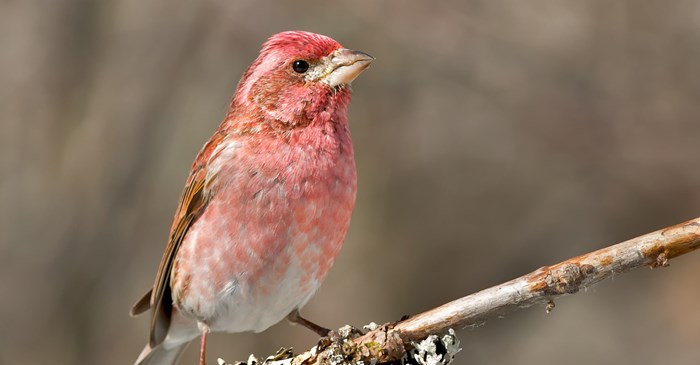Brightly colored finch feathers are always a delight to backyard birders, and these wine-colored beauties are no different. The Purple Finch is one to watch for in the winter. If you live anywhere east of the Great Plains, you might be treated to a visit at your backyard feeder.
They like to wing it
Why is a winter visit from a Purple Finch an uncertain thing? This bird is known for its short-distance but erratic migration patterns, meaning if you happen to see them one year, they may not return the next. So when you do catch sight of one, enjoy it while you can. In the spring, they return to their Canadian forests. They also spend time year-round in forests along the west coast and far north of the Midwest and New England.
They remix other birds' tunes
The Purple Finch has its signature warble, but they’re dabblers in remixing, as they integrate songs from other birds into theirs, especially that of the American Goldfinch, Eastern Towhee and Brown-headed Cowbirds. When courting a female Purple Finch, a male will sing softly to the female, holding nesting material in his beak.
They're a bit tricky to ID
The Purple Finch appears on FeederWatch’s Tricky Bird ID list, grouped with the House Finch and Cassin’s Finch, since all three have brown bodies and redheads in common. What separates the Purple Finch from the others is how its purplish-red coloring spreads through its back, chest and wings. As one birder put it, they look like a sparrow dipped in raspberry jam.
How to attract
The Purple Finch also has a large beak that’s well suited for getting to the pine seeds they love to eat. In the winter, the sight of sunflower seeds will have them coming in for a landing on your backyard feeder. Lyric Supreme Mix, with one of its many ingredients being black oil sunflower seeds, is just the blend for the Purple Finches in your neighborhood.
